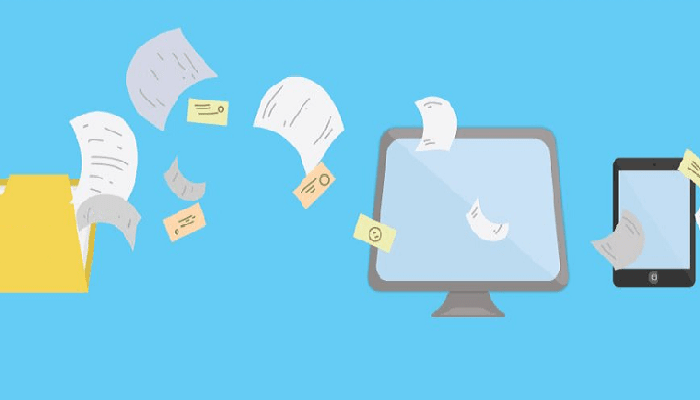
Ever since the early 1980's, when personal computers first started to become an essential part of everyday work life, there's been talk of the paperless office. Now, here we are 40 years later, everyone's still talking about it, and we're still consuming vast amounts of paper. So, is the concept of the paperless office a myth or are there emerging signs that it's finally going to become a widespread reality?
As is usually the case in most complex scenarios, the answer isn't a simple "yes" or "no", as it lies somewhere in between. Whereas it's now realistic to believe it will become much more common to use less paper in the office, it's still unrealistic to think it's likely to ever be completely eliminated.
Back in the 1980's, as early adopters of personal computers started to understand and visualize the potential for huge productivity improvements through the use of newly emerging software applications, the pathway toward digitizing many hard copy analog elements of traditional office workflows started to appear.
This is what led to extravagant claims about the concept of the "paperless" office. Unfortunately, at that time, there were still many obstacles in the way of making this a practical reality. These included:
So, what happened was personal computers started to appear on every desk and each of them was then connected to a convenient (almost personal) printer. These two components allowed everyone to continue their analog work practices far more efficiently. As a result, we printed many, many more documents which we then had to pay office staff to file and retrieve. Unfortunately, whatever, we saved printing documents more quickly and efficiently, we consumed buying more cabinets to file them in, renting more space to put them in, and hiring more employees to file them away and to occasionally retrieve.
Worker habits and preferences are the primary obstacle preventing a completely paperless office.
Most of the technical obstacles that made the concept of a paperless office completely unrealistic 40 years ago have been overcome. Low cost scanning hardware is widely available, storage capacity for electronic documents is cheap and virtually unlimited, software for permission based access to documents is widely available and inexpensive, and broadband internet access makes it easy to share and access electronic files from anywhere there's internet access.
For the business owner who unilaterally decides "no more paper" and, to achieve that goal, takes the radical step of removing all the printing devices from the office with the exception of a single-purpose scanning device, there's no doubt it would be possible for that business to continue to operate without generating any new paper documents. However, that business is likely to have a group of disgruntled workers forced to read, review, sign, and process all its business documents online. As we know, not everyone is ready for such a radical change in work practices!
However, without having to take such radical action, what can be seen is that it has become feasible to implement systems for reducing the amount of paper in the office without causing the disruption associated with attempting to completely eliminate it.
Forcing a change in workflows frequently encounters resistance from those that are impacted resulting in poor worker adoption. However, those same workers resistant to radical change have willingly absorbed many new work practices because they have made their jobs incrementally easier. Just think back to the days of paper based statements, invoices, multi-part forms, carbon copies, a multitude of application forms, etc. etc. The list is endless.
Although many businesses have clung on to these dated, inefficient "analog" work practices, an increasing number are converting these workflows into electronic, auto-populated forms, that can be transmitted quickly and efficiently to whoever needs to see them. It's these types of practices that make daily routines more efficient and encounter far less worker resistance.
Think for a moment about what it used to take to fill in an application for business credit terms! This probably required a multi-page, multi-part document with the applicant having to retrieve bank account details, trade references, etc. then, when finally done, the application was submitted by mail and, perhaps a week or two later, the outcome known. Many of these details can now be entered online and approvals obtained in minutes - a dramatic improvement in efficiency that can make a big difference to the chances of winning a new customer.
This is what leads to the final point with regards to why it has become so important for businesses to adopt efficient, electronic workflows. Workflows that reduce the amount of paper in the office but, more importantly, improve the customer experience while simultaneously improving efficiency and reducing cost. In business, it's brutal, ultimately only the fittest survive and eliminating waste and inefficiencies become vital requirements for surviving as a business.
Furthermore, for an increasingly mobile workforce to be calling back to the home office for time-sensitive business information compared to a quick online search to get what's needed, there's no contest in terms of what's necessary to be successful in today's business environment.
To get started on your journey toward reduced cost and improved efficiency please visit our technology page and make this your entry point to consuming less paper in your office.